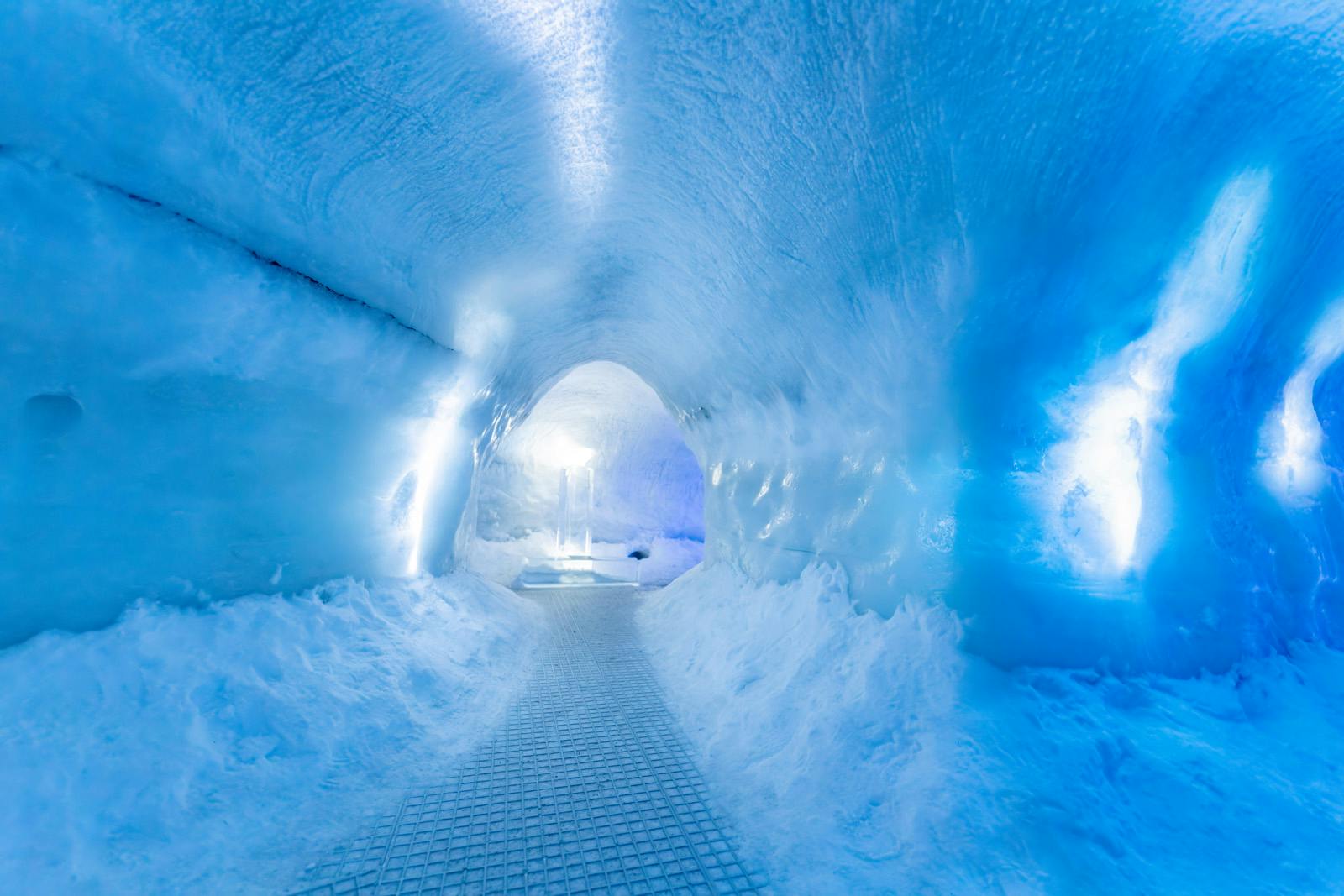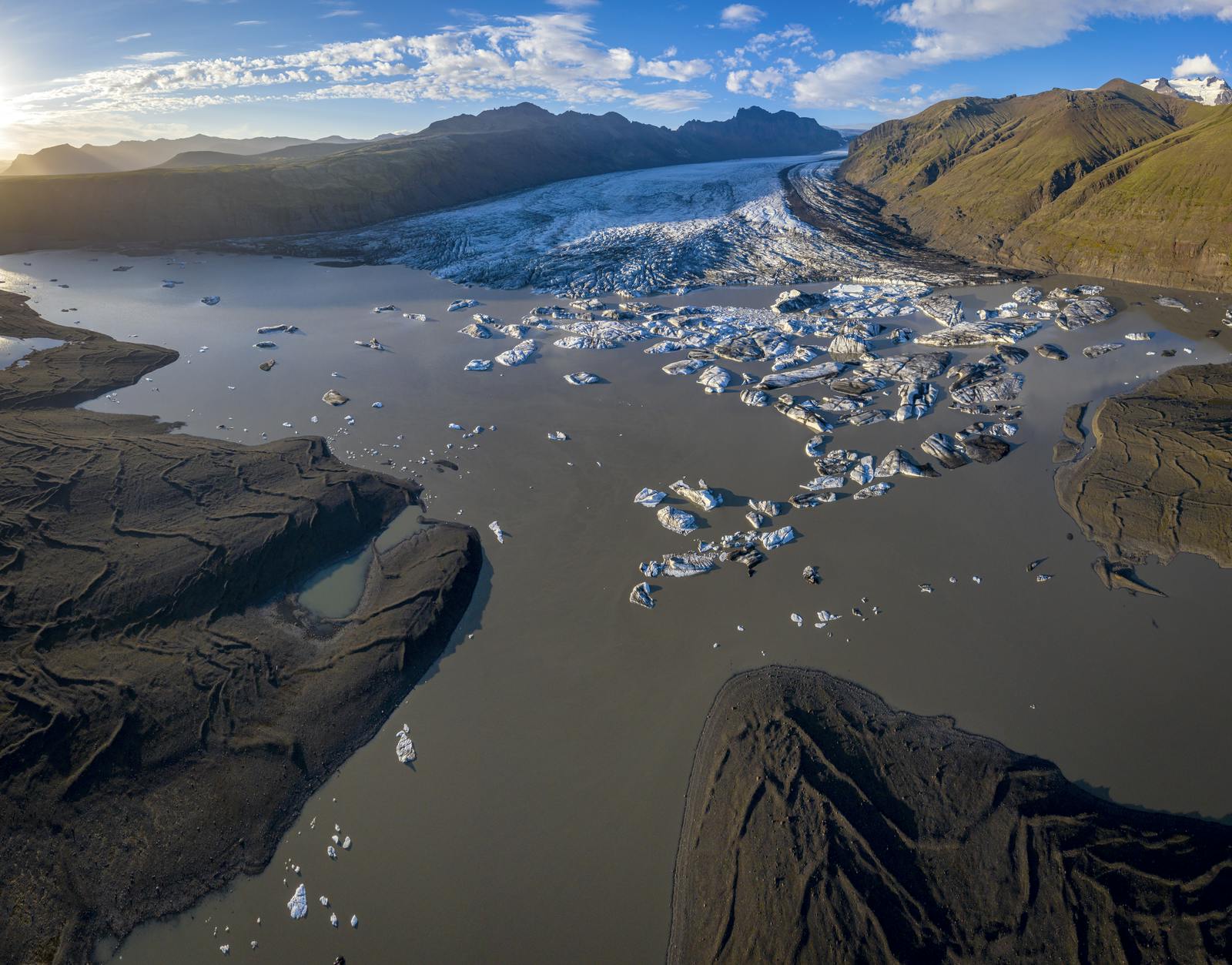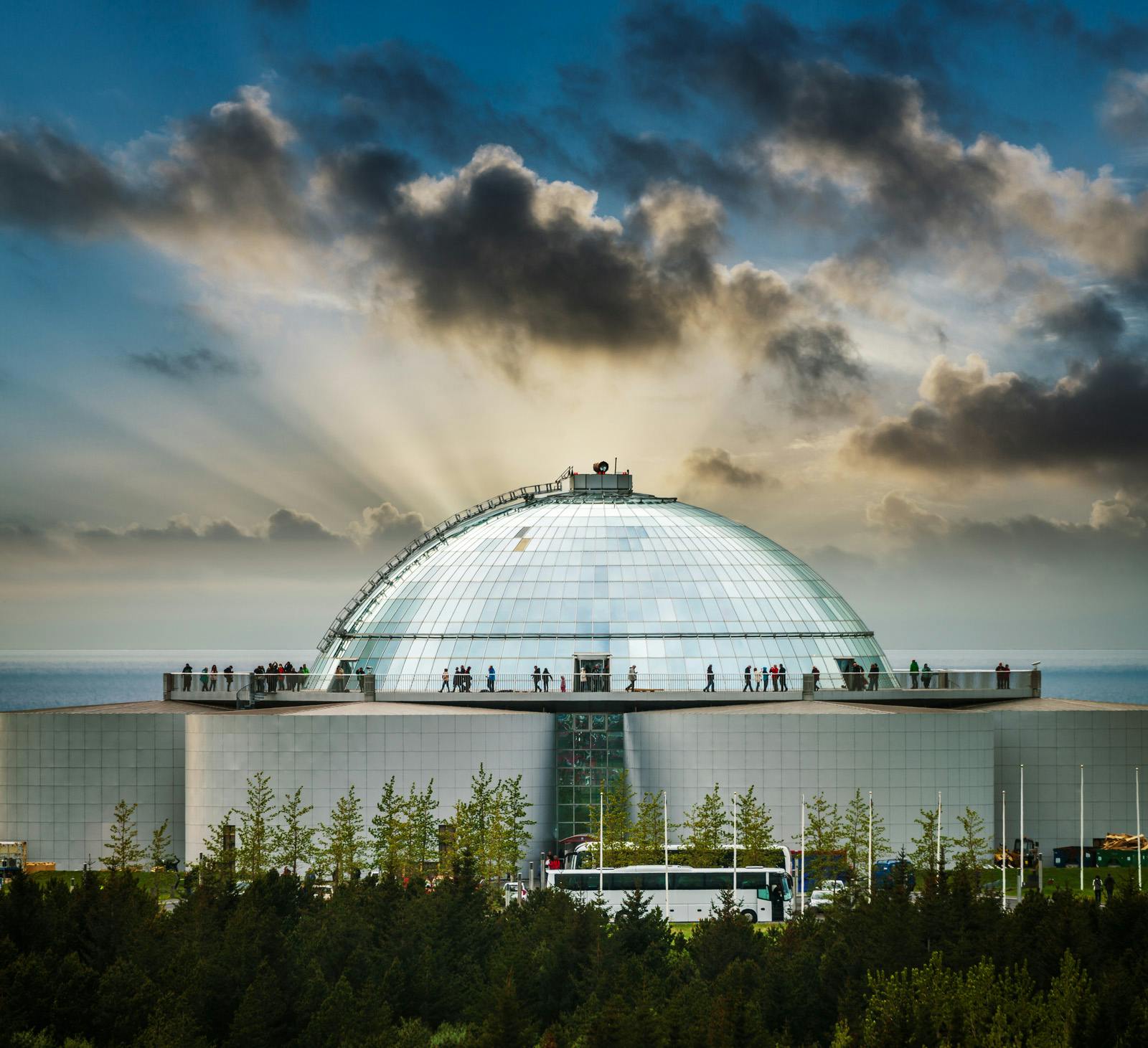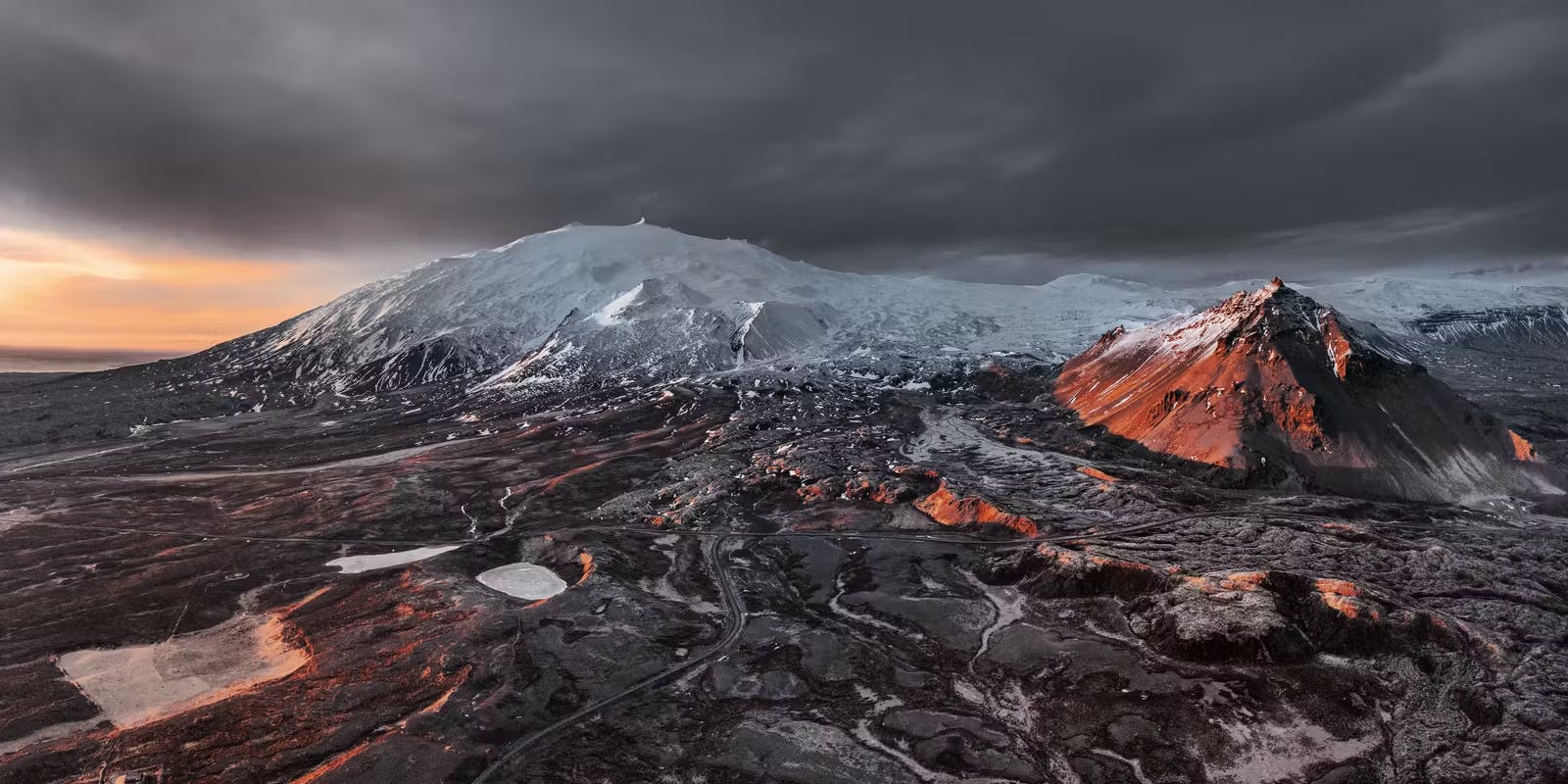
Iceland’s Glaciers Are Melting: Why Are They Disappearing So Fast?
Iceland’s glaciers are melting at a record pace. Rising temperatures and shifting weather patterns are causing glaciers to retreat faster than ever. Scientists warn that if current trends continue, Icelandic glaciers may disappear by 2200.
At Perlan in Reykjavík, visitors can explore a real ice cave and learn about glacier melting in Iceland through interactive exhibits. It’s one of the best places to understand how climate change is reshaping Iceland’s landscape.

But why is Iceland’s ice melting so fast? What does it mean for the country’s future? Let’s explore the causes, consequences, and what can be done to slow this process down.
Why Are Iceland’s Glaciers Melting?
Glaciers play a crucial role in Iceland’s climate, water systems, and tourism industry. But warming temperatures are disrupting this balance.
Rising Temperatures
The Icelandic Meteorological Office reports that the average temperature in Iceland has increased by 1.5°C since 1900. Warmer winter temperatures mean less snowfall and warmer summer temperatures mean more ice melting.
Changing Weather Patterns
Shifting wind and precipitation patterns impact Iceland’s glaciers. Snowfall is no longer enough to replace melting glacier ice. The mass balance (the difference between ice gain and loss) is now negative for most glaciers.
Volcanic Activity
Iceland’s glaciers are located on volcanic terrain. Eruptions can speed up glacier melting by covering the ice with ash, which absorbs sunlight and increases melting.
Warmer Ocean Currents
Increased ocean temperatures warm up the atmosphere and accelerate glacier retreat.

How Fast Are Iceland’s Glaciers Melting?
The melting rate of Icelandic glaciers is among the fastest in the world. Some key figures:
- Since 1890, Iceland has lost 16% of its total glacier cover.
- The Vatnajökull National Park area, home to Europe’s largest glacier by volume, loses about 1 meter of ice per year.
- Iceland’s ice caps could be gone within 200 years if melting continues at this pace.
- Scientists from the University of Iceland use satellite images and climate models to track these changes. Their findings confirm that Icelandic glaciers are shrinking at an accelerating rate.

What Happens When Glaciers Retreat?
Glacier retreat has serious consequences for Iceland and the rest of the world.
Rising Sea Levels
Melting glaciers add freshwater to the ocean, rising sea levels. This can lead to flooding in coastal areas, threatening communities worldwide.
Changing Iceland’s Landscape
As glaciers disappear, they leave behind unstable terrain. Landslides and floods become more common, affecting roads and infrastructure.
Iceland’s Glaciers in 2050 and Beyond
What will Iceland look like in 2050 if glacier melting continues? Scientists predict:
- Most glaciers will be significantly smaller.
- Ice-covered areas in Vatnajökull National Park will shrink drastically.
- Some smaller glaciers will completely disappear.
- More extreme weather due to changing weather forecasts.
- Looking even further ahead, Iceland’s glaciers could be almost entirely gone by 2200.
At Perlan’s Glacier Exhibition, visitors can see real-time glacier data and predictions for Iceland’s future landscape.

Can We Slow Down Glacier Melting?
While glaciers will continue to shrink, we can slow the process by:
1. Reducing Carbon Emissions
Lowering greenhouse gas emissions can help stabilise temperatures and slow glacier loss.
2. Protecting Iceland’s Ecosystems
Reforestation and land conservation efforts help maintain Iceland’s natural balance.
3. Raising Awareness
Institutions like Perlan in Reykjavík educate visitors about climate change and its effects on glaciers.
4. Supporting Climate Policies
Global agreements like the Paris Climate Accord aim to reduce the rise in temperature and protect the world’s glaciers.

Explore Iceland’s Glaciers at Perlan
Want to see a glacier up close? Perlan offers:
- A man-made ice cave made from real glacier ice
- A glacier exhibition explaining climate change’s impact on Iceland
- Stunning views of Reykjavík from its observation deck
- It’s one of the best places to learn about Iceland’s glaciers before they disappear.
Iceland’s glaciers are disappearing due to climate change and rising temperatures. This has serious consequences for Iceland’s landscape, sea levels, and economy.
At Perlan in Reykjavík, visitors can explore Iceland’s glaciers through interactive exhibits and a real ice cave.

FAQ
How will Iceland be different in 100 years?
Many of Iceland’s glaciers will be gone, altering landscapes, rivers, and coastal areas.
Did Iceland hold a funeral for a glacier?
Yes, Iceland held a memorial ceremony for Okjökull in 2019, marking its disappearance due to climate change.
What happens when a glacier recedes?
As glaciers retreat, they expose land, increase flood risks, and disrupt ecosystems.
Why are glaciers in Iceland black?
Some glaciers appear black due to volcanic ash and debris from eruptions.
What will Iceland look like in 2050?
Glaciers will be much smaller, weather patterns will shift, and coastal areas may face higher sea levels.
Can you drink glacier water in Iceland?
Yes, although Iceland’s glacier water is often muddy, it is safe to drink.
Where is the largest existing glacier located?
The Vatnajökull glacier in Iceland is Europe’s largest glacier by volume.







